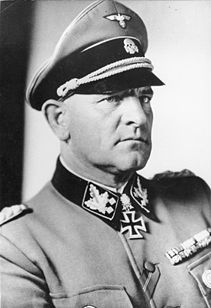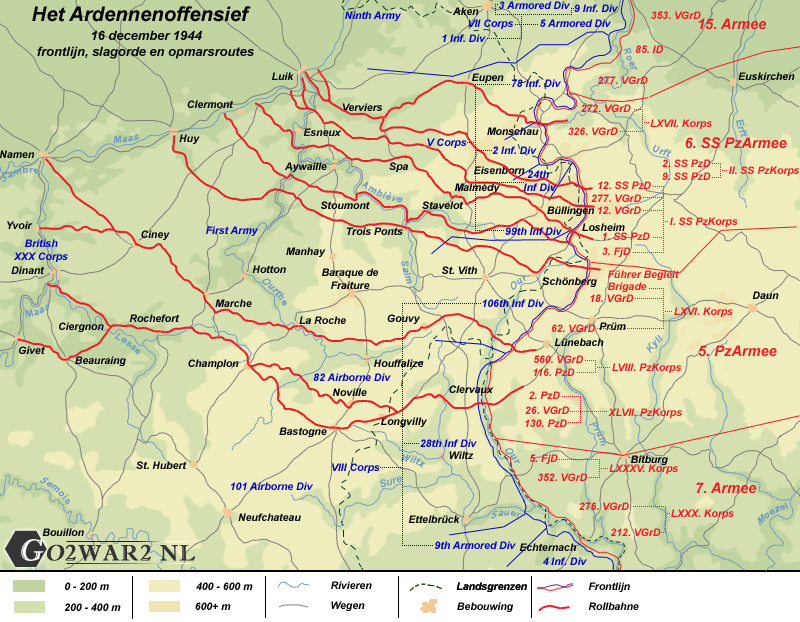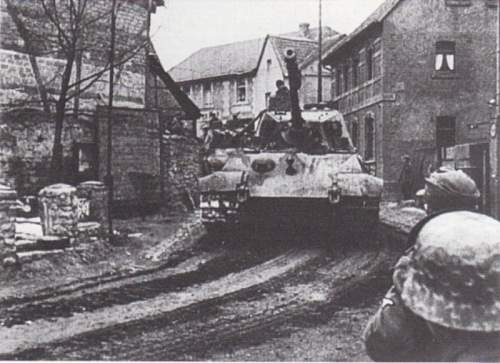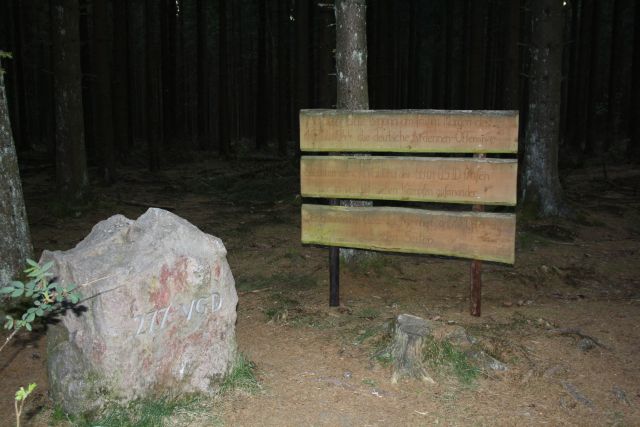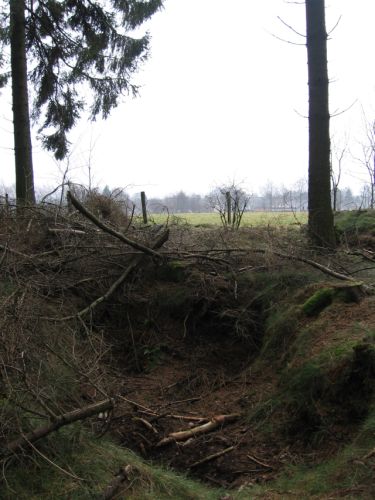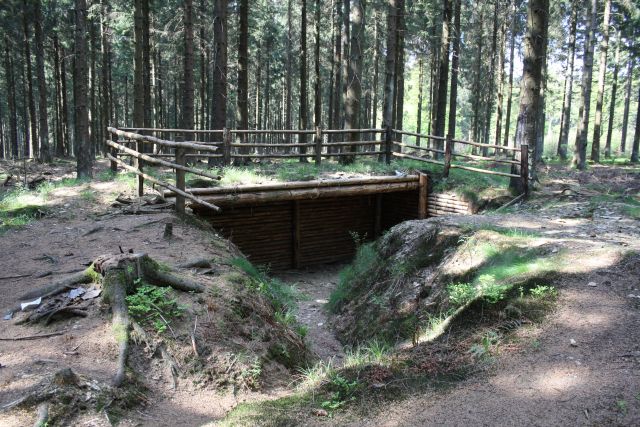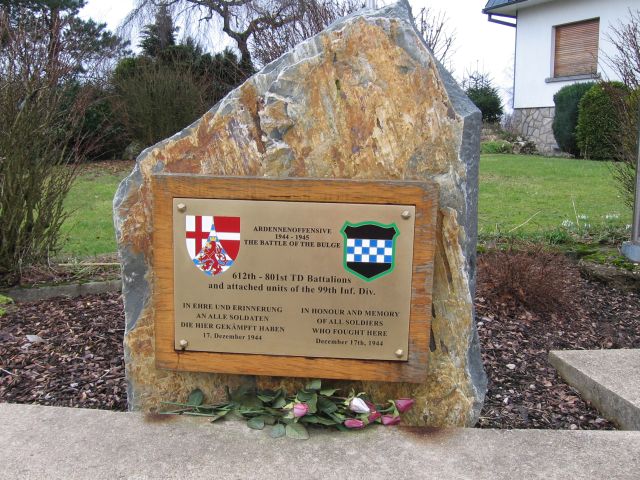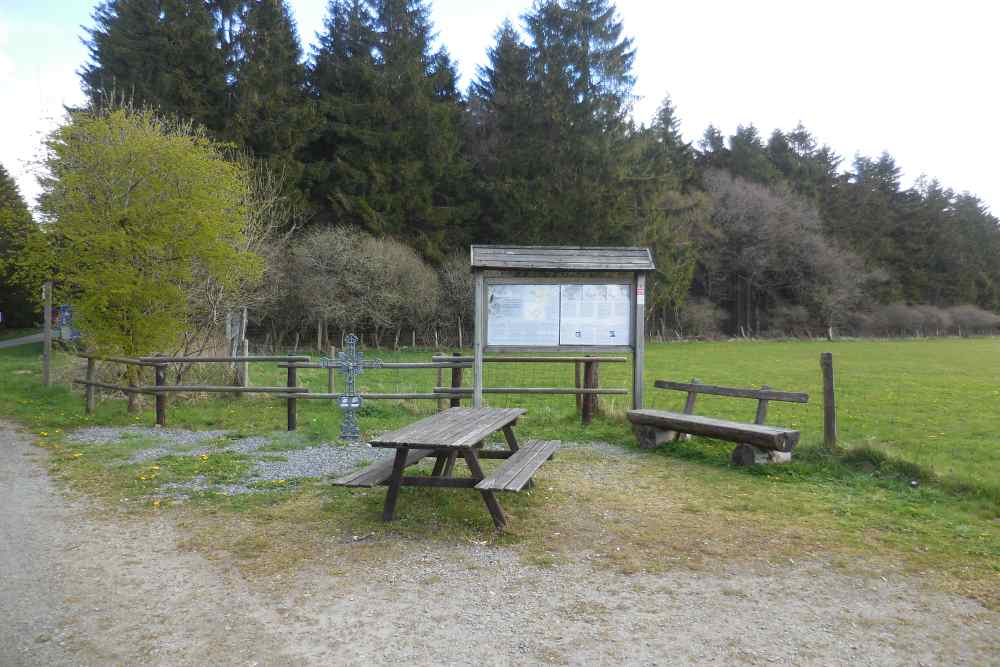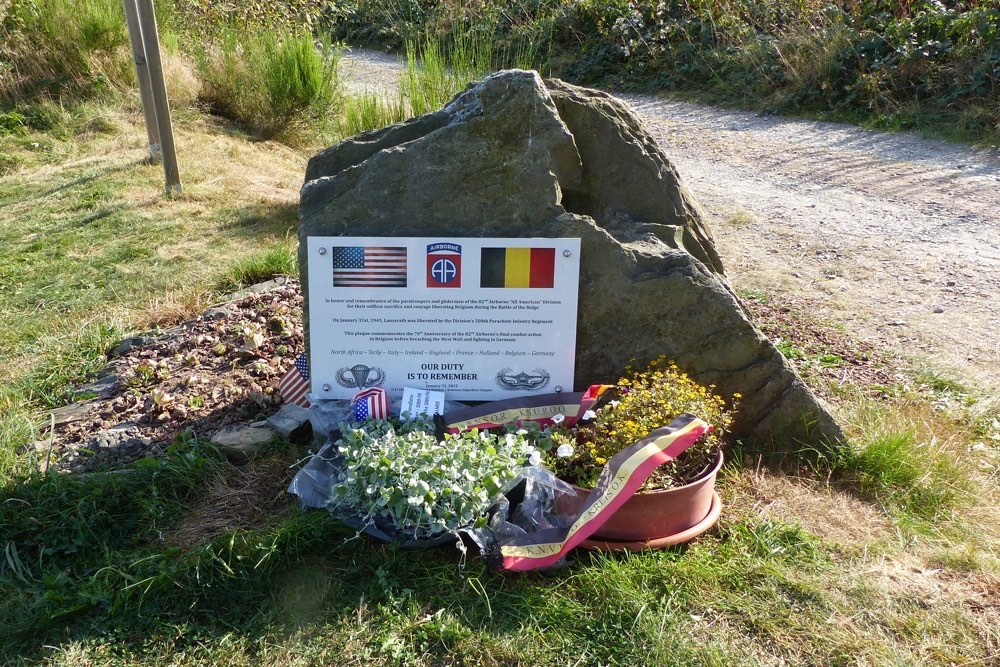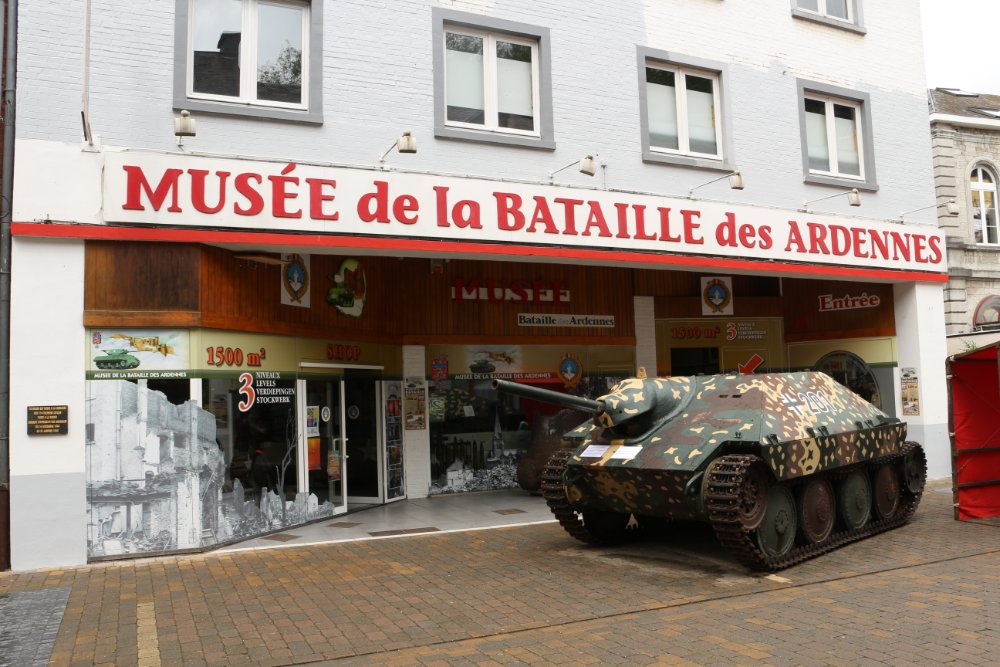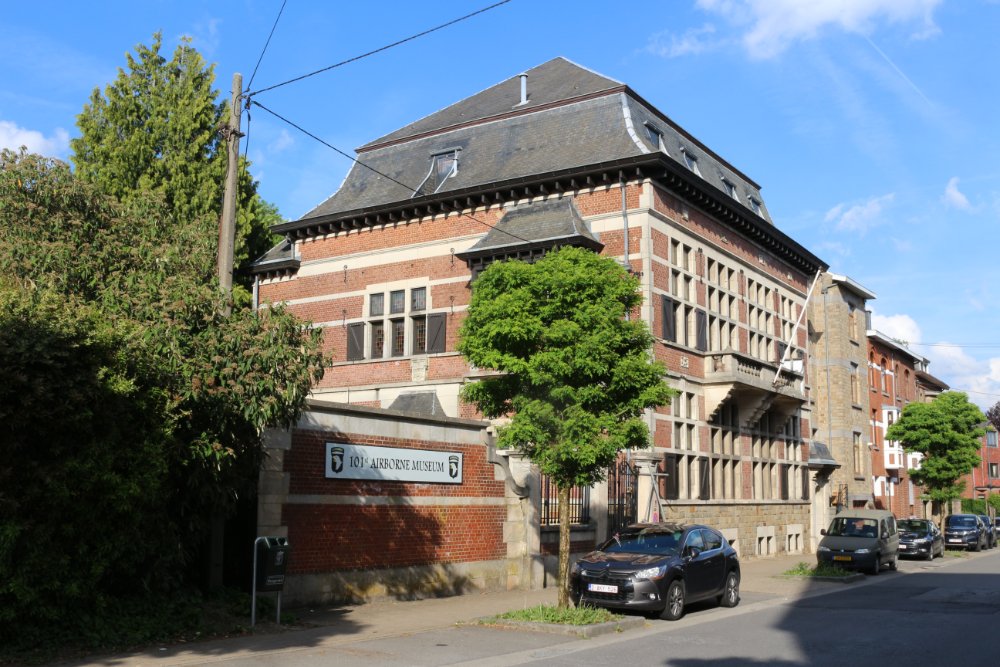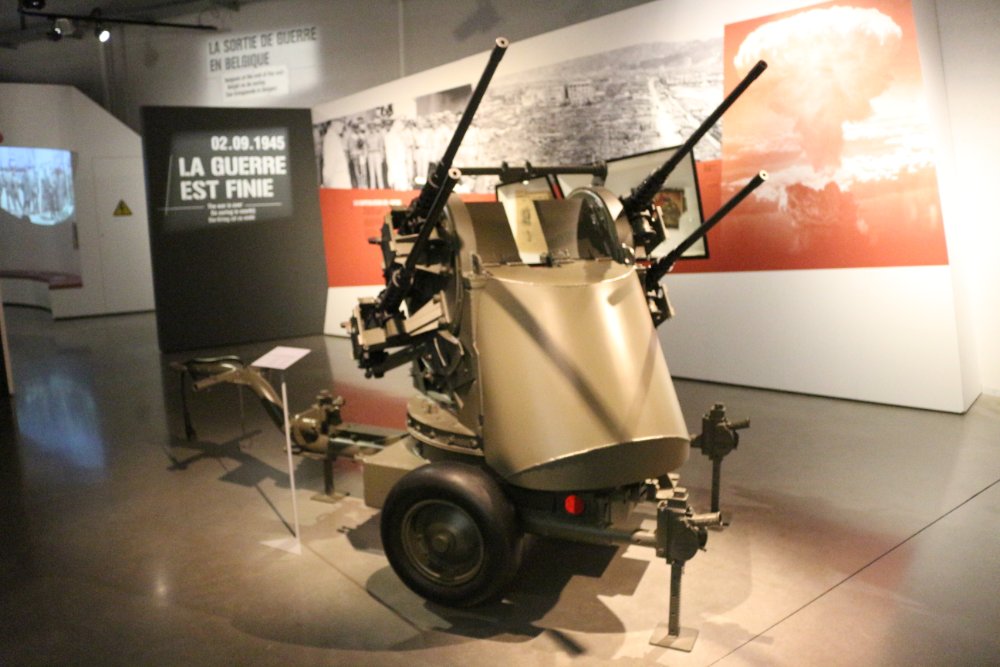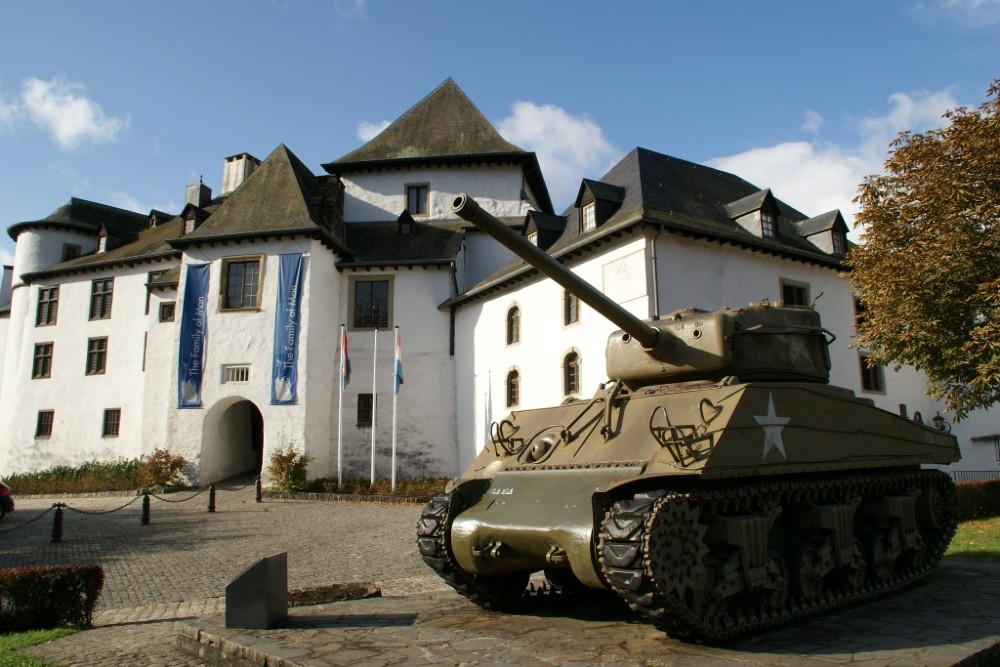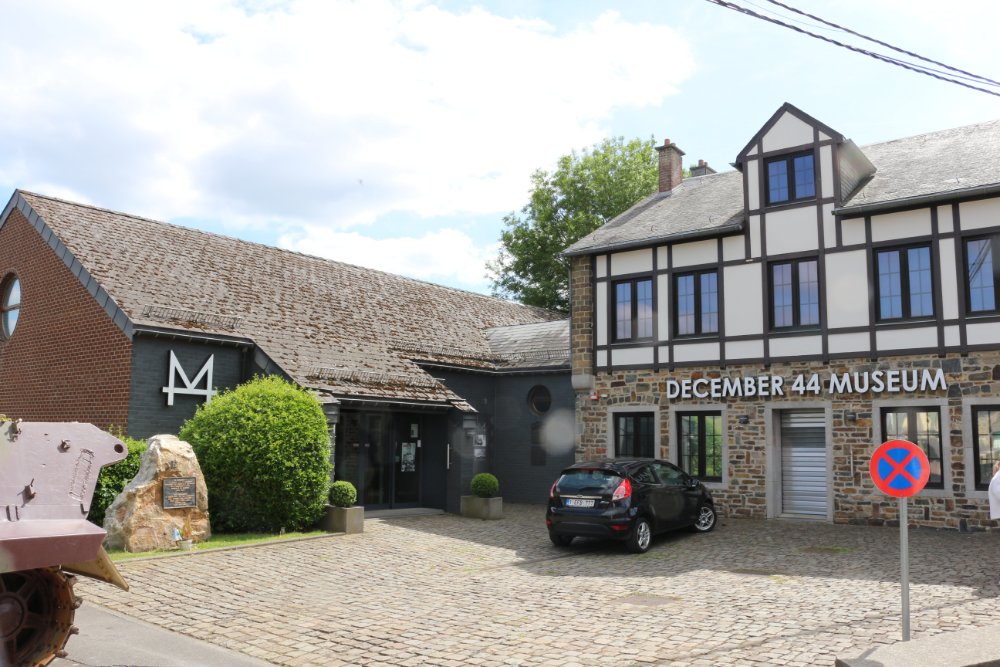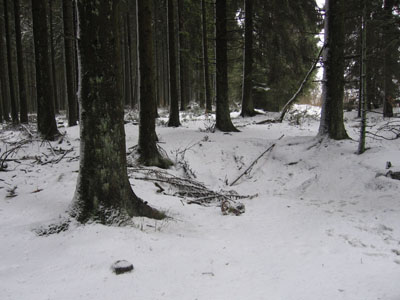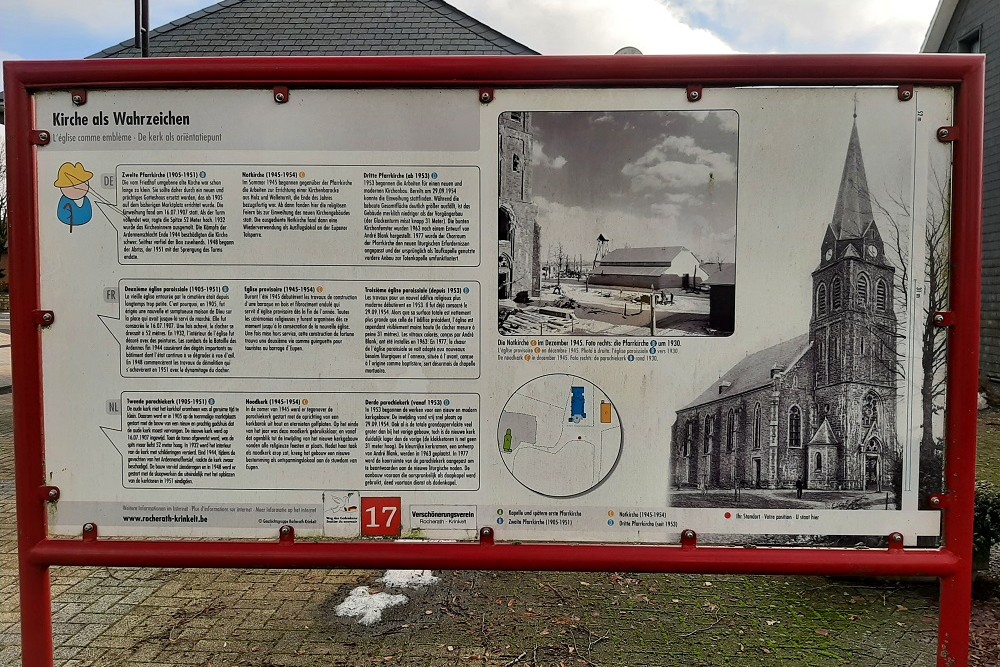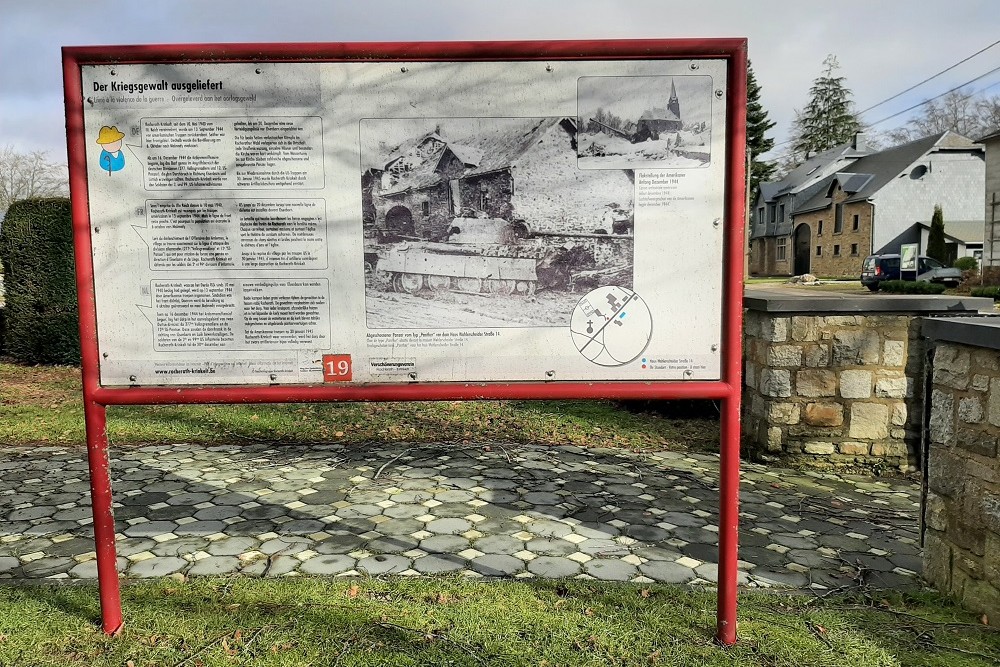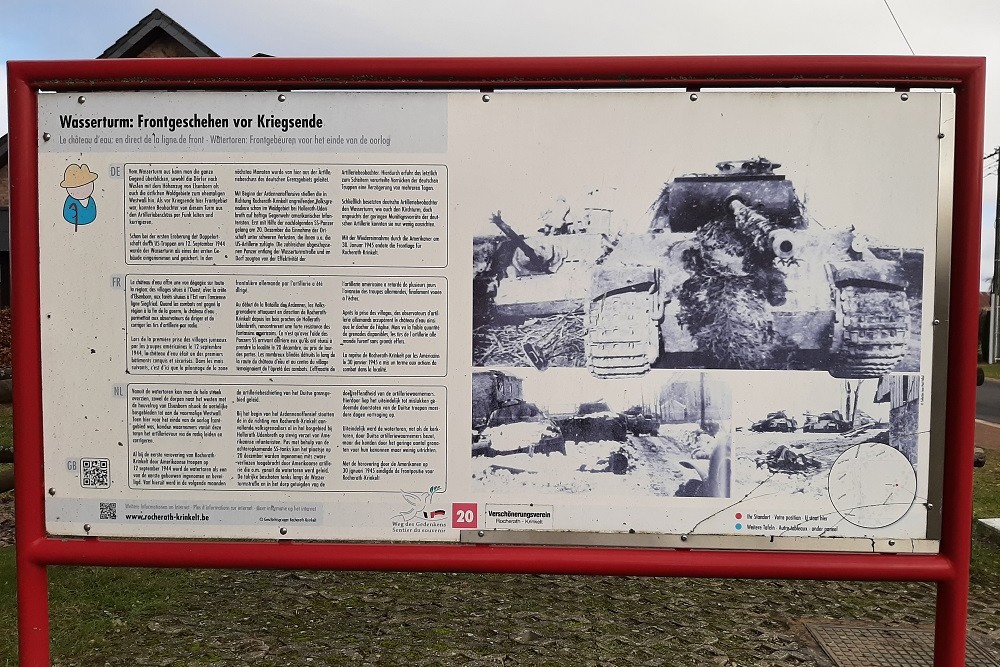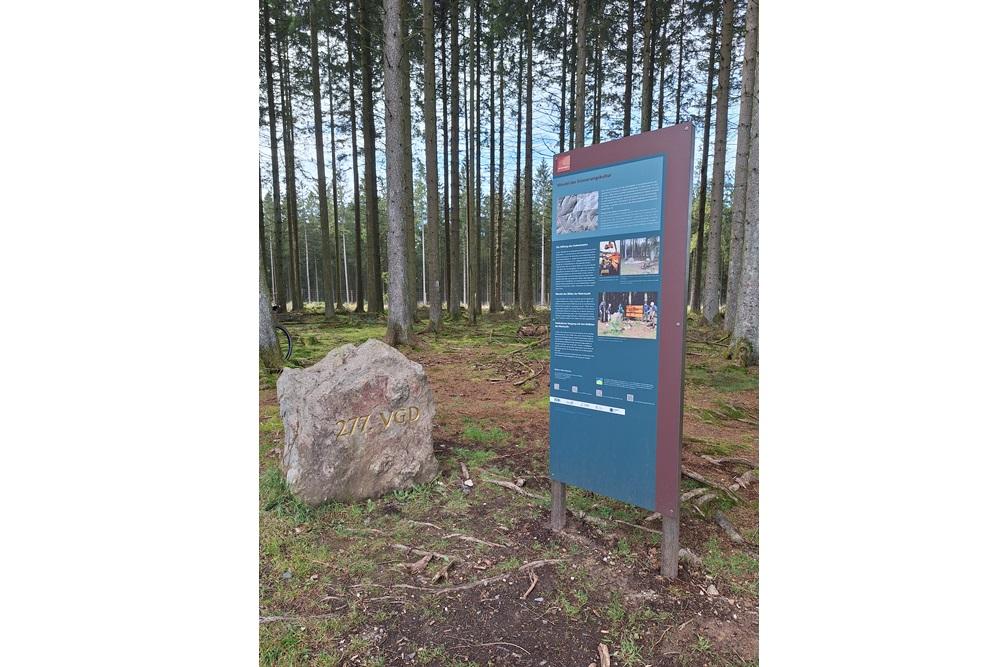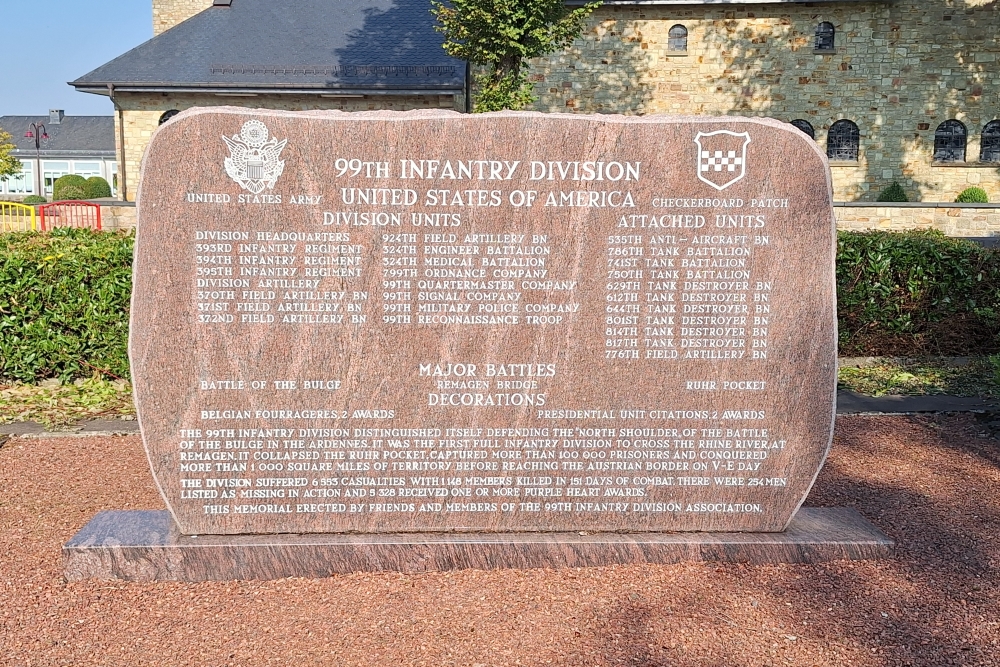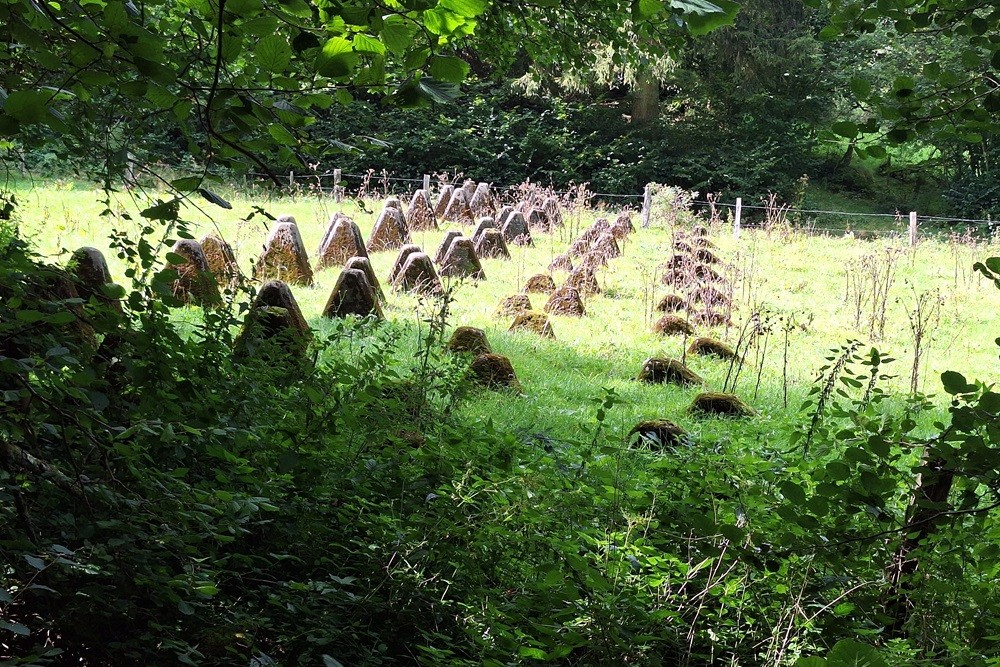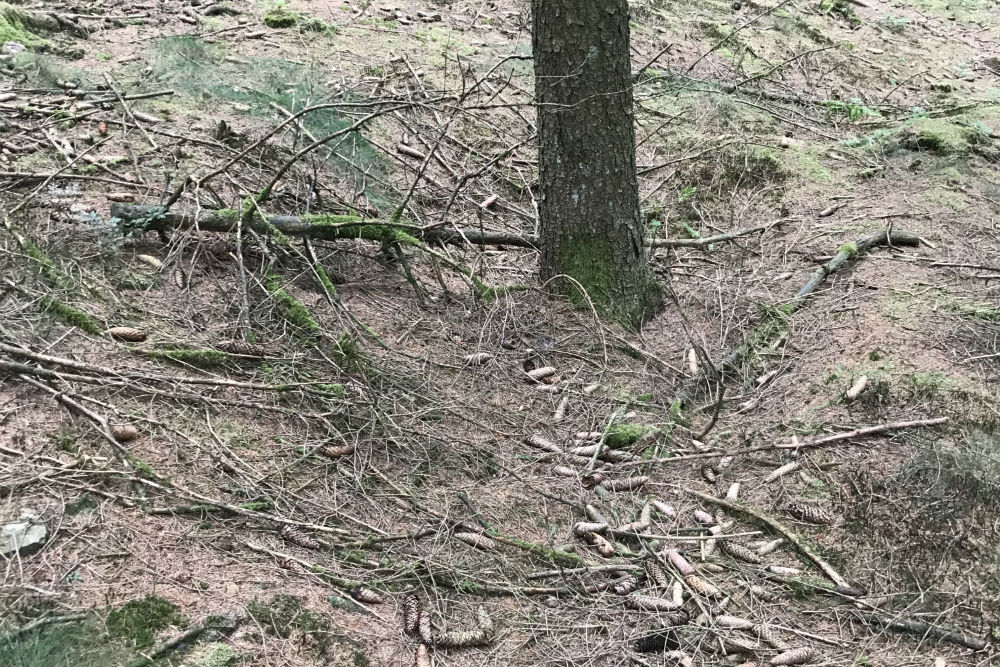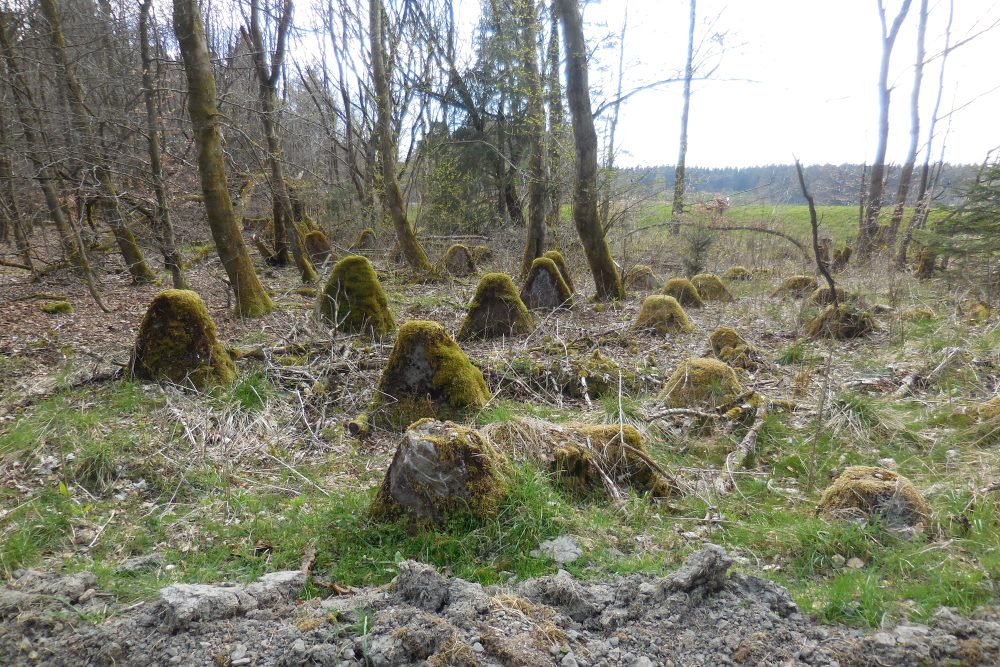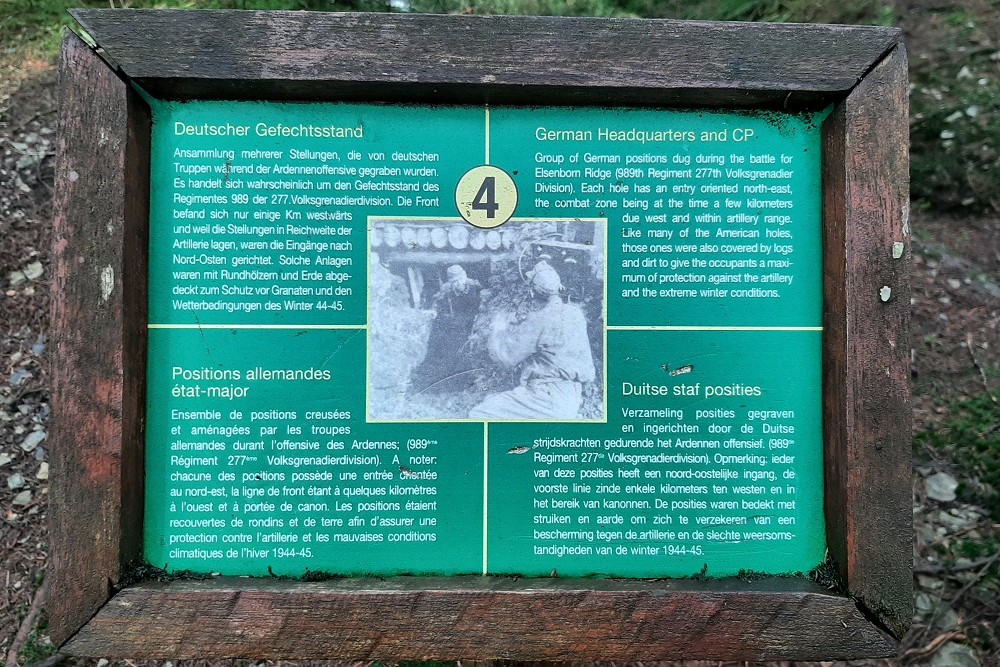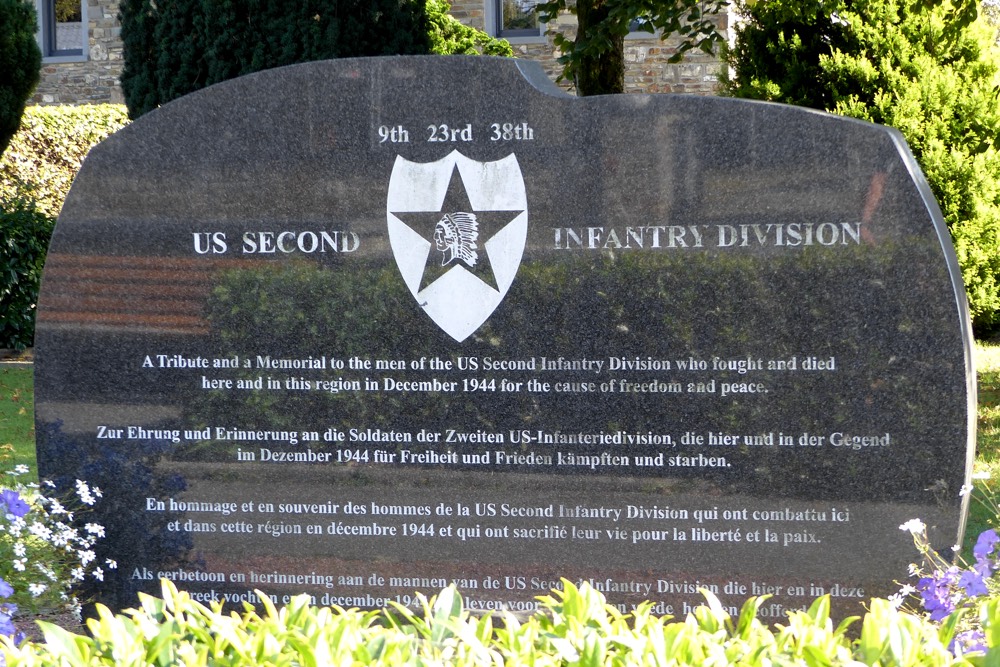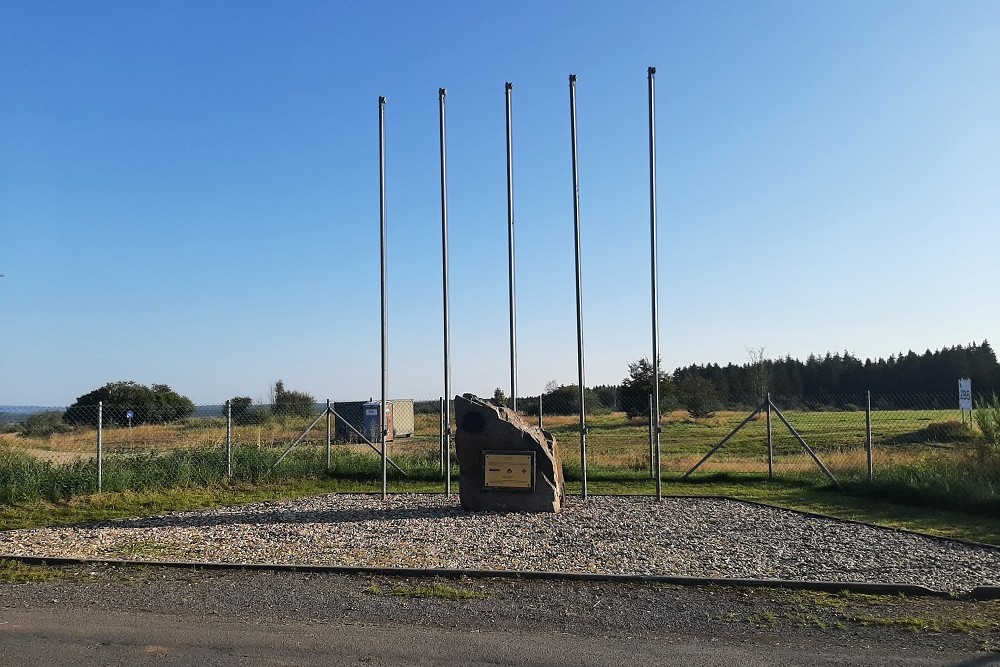Introduction
The Elsenborn ridge is a boomerang shaped, higher laying ground east of the Belgian village Elsenborn with view on the villages Krinkelt-Rocherath and the German border. When at 16 December 1944, the Ardennes offensive started,the forward American units were ordered to fall back on this easily defendable position. Surprised by the sudden German attack the Americans fought for four days in order to secure themselves and to contain the German advance. The Ardennes offensive officially lasted from 16 December 1944 to 25 January,1945 but this battle for the Elsenborn ridge, fought between the American 99th and 2nd Infantry Divisions and the 6. German Panzerarmee would be decided in the advantage of the allies in four days.
The Belgian Ardennes were known to the allies in 1944 as a secondary front. Newly arrived divisions could get used to front life and battered divisions could rest and recuperate. Situated between the Hürtgenwald in the north, where a bloody battle had been raging since September 1944 and French Lorraine to the south, where General George Patton struggled through strong German fortifications near Metz, the Ardennes were an area of rest, warm food, hot showers and entertainment. Private Joe Schectman articulated the picture of this sector on 15 December in a letter home: "We are quartered here as comfortable and safe as in England. Of course I can't say how long we will remain in this paradise. As long as I am here, I am safe."
One day later, in the early morning of 16 December, right here the final German offensive in the west in the Second World War began. It was aimed at cutting off allied supplies. Its main aim was the port of Antwerp that could be reached most quickly over the road through Büllingen, Malmedy and Liege. For that reason, the focus of the German attack lay in the northern sector of the Ardennes. In order to break through to the west, the conquest of the Elsenborn ridge was therefore very important to the Germans.
Definitielijst
- Ardennes offensive
- Battle of the Bulge, “Von Rundstedt offensive“ or “die Wacht am Rhein“. Final large German offensive in the west from December 1944 through January 1945.
- Infantry
- Foot soldiers of a given army.
- offensive
- Attack on a smaller or larger scale.
Images
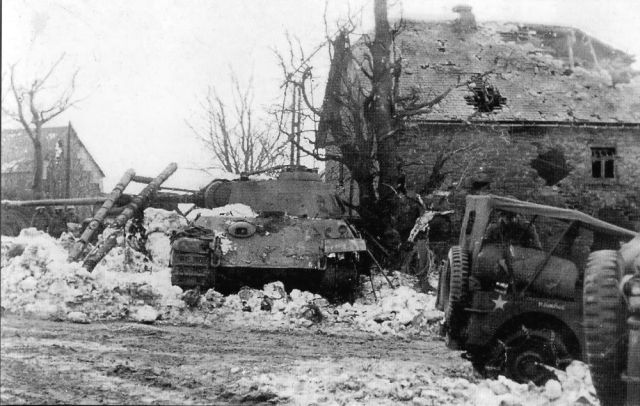 A knocked out German tank (Panther) in Krinkelt. Source: U.S. Army Center for Military History.
A knocked out German tank (Panther) in Krinkelt. Source: U.S. Army Center for Military History.Prelude to the battle
The German 6. Panzerarmee, commanded by SS-Oberstgruppenfuhrer Josef Dietrich had been equipped with the best that the German army could offer for "Unternehmen Wacht am Rhein", the code name of the offensive. It consisted of four SS-Panzerdivisions, complemented by five Volksgrenadier-Divisions with a total of approximately 685 guns , divided in three corps:
| 1. SS-Panzerkorps. | |
| - 1. SS-Panzerdivision "Leibstandarte Adolf Hitler". |
34 Panzer IVs 37 Panthers 10 Jagdpanzers 30 Tiger IIs |
| - 3. Fallschirmjäger Division. | |
| - 12. Volksgrenadier-Division. | 6 StuGs |
| - 12. SS-Panzerdivision "Hitlerjugend". |
38 Panthers 39 Panzer IVs 47 Jagdpanzers |
| - 277. Volksgrenadier-Division. | 6 Jagdpanzers |
| 2. SS-Panzerkorps. | |
| - 2. SS-Panzerdivision "Das Reich". | 58 Panthers 28 Panzer IVs 28 StuGs |
| - 9. SS-Panzerdivision "Hohenstaufen". | 35 Panthers 56 StuGs 39 Panzer IVs 21 Jagdpanzers |
| 67. Armeekorps. | |
| - 272. Volksgrenadier-Division. | |
| - 326. Volksgrenadier-Division. |
For the 1. SS-Panzerkorps five routes (Rollbahnen) were designated, but it was not strictly necessary to follow these strictly: .Panzerarmee could deviate from the Rollbahnen according to resistance that would be encountered. The three northernmost Rollbahnen were for the 12. SS-Panzerdivision and the two southernmost were destined for the 1. SS-Panzerdivision. A possible counterattack of three American divisions in the Elsenborn region was taken into consideration. For that reason the focus of the Panzerdivisions was concentrated somewhat more to the south on the Rollbahnen C and D, near Malmedy and Stavelot. On Rollbahn C Kampfgruppe Kühlmann of the 12. SS-Panzerdivision was to spearhead the advance and on Rollbahn D the Kampfgruppe Peiper of the 1. SS-Panzerdivision would do the same.
Rollbahn B, that ran right in front of the Elsenbornridge , was destined for Kampfgruppe Müller. After strict secrecy, on 10 December the orders were given to the 6. Panzerarmee:
"On day 0, at 06:00 hour, the 1. SS-Panzerkorps and her infantry divisions will break through the enemy positions in the sector Hollerath-Krewinkel. It will then penetrate over the Meuse in the sector Liege-Huy with the 12. SS-Panzerdivision on its right and the 1. SS-Panzerdivision on its left. The 2. SS-Panzerkorps will remain right behind the 1. SS-Panzerkorps in order to follow it immediately. The 1. SS-Panzerkorps has the mission to either reach the Meuse in cooperation with the 2. SS -Panzerkorps or to push through to Antwerp after having reached the Meuse, without consideration to the flanks. The 67. Armeekorps will break through the enemy lines on both sides of Monschau. After passing the crossroads Mützenich-Elsenborn it will form a defensive front on the line Simmerath – Eupen – Liege for the more southern two Panzerkorps."
The defence was formed by the recently arrived American 99th Infantry Division that was commanded by Major-General Walter E. Lauer. Their positions reached from Monschau in the north to Losheim in the south:an area that, under normal circumstances, is defended by three divisions. The reason for this was that the Americans expected no troubles here; the German army had pulled back behind the easily defended Siegfried Line.Because of this a counteroffensive was considered to be most unlikely. Besides, the terrain of the Ardennes, with its ravines, meandering rivers and narrow roads was not suited for a German offensive. German intelligence knew of the underequipment and expected little resistance during the coming offensive and a quick German breakthrough. The battle-hardened American 2nd Infantry Division was stationed, according to the same German intelligence, to the rear and would not be able to be deployed in time for a defence of this sector.However, on 13 December, the 2nd Division moved in a northeastern direction for an operation aimed at the Roerdams at Dreiborn, in cooperation with elements of the 99th Infantry Division.
Definitielijst
- Fallschirmjäger
- German paratroopers. Part of the Luftwaffe.
- infantry
- Foot soldiers of a given army.
- Kampfgruppe
- Temporary military formation in the German army, composed of various units such as armoured division, infantry, artillery, anti-tank units and sometimes engineers, with a special assignment on the battlefield. These Kampfgruppen were usually named after the commander.
- Leibstandarte
- Elite troops, originally Hitler’s body guards. Starting as a motorized infantry regiment it grew into a Panzer division.
- offensive
- Attack on a smaller or larger scale.
- resistance
- Resistance against the enemy. Often also with armed resources.
Images
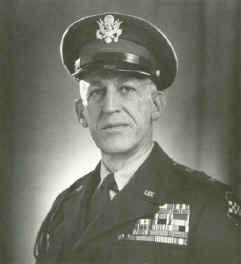 Major-General Walter E.Lauer, commander of the 99th Infantry Division. Source: U.S. Army Center for Military History.
Major-General Walter E.Lauer, commander of the 99th Infantry Division. Source: U.S. Army Center for Military History.The battle begins, 16 December 1944
On 05:30 hour the operation "Wacht am Rhein" started with an artillery barrage that lasted 30 minutes. Subsequently German infantry units started their advance towards the American positions to the west in order to secure important roads and junctions so that the Panzerdivisions could easily penetrate. The infantry units that would perform the first attack in the direction of Elsenborn were the 277. Volksgrenadier-Division and the 12. Volksgrenadier-Division. Their targets were the twin villages of Krinkelt and Rocherath and the road running south from them from Büllingen to Nidrum. A key element in the Ardennes offensive would be surprise and speed; two important elements of the "Blitzkrieg"strategy that had proved so successful earlier in the war. During the first day of the offensive, surprise indeed was achieved. Nevertheless, the surprised Americans managed to delay the German advance.
The most northern unit of the 277. Volksgrenadier-Division overwhelmed the American lines that lay near the German jump off point, but the two more southern units, that first had to cross a field a kilometer wide, were held up by American machine gun and mortar fire. At the end of the day the two German units still hadn't driven the Americans out of the woods east of Krinkelt. Their remaining number proved to be far too small to seize the twin villages. For that reason, SS-Gruppenführer Hermann Priess, commanding officer of 1. SS-Panzerkorps, decided to send in Kampfgruppe Müller of the 12. SS-Panzerdivision as reinforcement.
The 12. Volksgrenadier-Division had to cross the so-called Losheim Gap, a narrow valley between Losheimergraben and Losheim, and advance to Büllingen via Lanzerath or Buchholtz. One regiment of this division conquered Losheim near the Belgian-German border and followed the railroad towards Buchholtz. At the station of Buchholtz, Americans from the 394th Infantry Regiment were waiting in the cold for their kitchen train. First Lieutenant Neil Brown, leader of L Company, was behind the upper window in the station:
"At exactly 07:05 (according to both watches that I had), I looked over the railroad and I saw soldiers walking. Behind the station, soldiers were waiting in line for food and because I knew that sergeant Klug had made a scheme for every platoon to eat I turned around and I said:"Klug, that 1st Platoon is coming in for breakfast. What the hell is going on?" Klug stood beside me at the window and watched at the railroad. At that moment ,I also realized it when he said "1st platoon my ass, those are Germans!" Klug grabbed his rifle and ran outside along the railroad to the Germans. When he was at around 45 meters from the nearest soldiers he shouted a thunderous HALT! Believe me, every German stopped. One turned around, shouted orders and was shot in the back by Klug. Klug turned around and ran back bent double. Behind the station he ordered the soldiers to break off the line of breakfast and at the moment that they moved towards the Germans the German artillery started ferociously."
The entire day the Americans held the station. The Germans would bypass it in the evening to the wood in the west. This passageway was crucial for the offensive because the second road to Büllingen, that ran more to the south through Lanzerath, was stubbornly defended by 18 men of the Intelligence- and Reconnaissance Platoon, 99th Infantry Division. This platoon, commanded by Lieutenant Lyle J. Bouck Jr., had dug in in foxholes on a hill above Lanzerath from where it had an excellent view on the Losheim Gap. Because this unit was only lightly armed, its mission was primarily to observe and report instead of defending. After the opening barrage, Bouck contacted his commander by field telephone. The orders were clear: Report enemy movements and hold the ground! From his foxhole Bouck saw a column of Germans from the 3. Fallschirmjäger Division marching into the village and ascending the hill to his position. Heavily outnumbered, he wanted to wait with firing until all Germans were well in range. When the 100 soldiers walked past underneath Bouck, to his surprise, saw a blond girl running from the village to the soldiers in the rear of the column. She pointed excitedly at the position of the Americans. Immediately orders were yelled after which the Germans opened fire and tried to storm the hill in a frontal assault. Bouck and his men repulsed the attack the entire day until, at sundown, worn-out and almost without ammunition, they were surrounded and taken prisoner. Their brave stand ensured that the road from Büllingen through Lanzerath could not be used by the Germans which immediately disrupted the tight scheme of attack. After the capture of Lanzerath by the paratroopers Kampfgruppe Peiper, the spearhead of the 1. SS-Panzerdivision, finally could reach the village around midnight.
Besides the American resistance, SS-Obersturmbannführer Joachim Peiper, like the other Panzerdivisions,experienced other difficulties: The giant German columns of tanks, artillery, material, infantry and horse- drawn waggons had caused major congestions even before the Belgian border was reached. On top of that, a number of bridges was still destroyed that had been blown up by German engineers a few weeks ago during the retreat into Germany. Peiper wanted to make good this delay regardless of the consequences.Upon hearing in Lanzerath that Buchholtz still had not been taken he speedily sent his Panzerregiment to the northwest where he took Buchholtz and proceeded to Honsfeld.
The border village of Losheimergraben was at that time still in American hands. The crossroads, consisting of just a handful of houses, was a major thoroughfare for the German advance and was defended in the east by a battalion of the 394th Infantry Regiment, 99th Division, supported by a mortar platoon, three antitank guns and a section of heavy machine guns. After vicious attacks of the 12. Volksgrenadier-Division the Americans pulled back at the end of the day to the houses of Losheimergraben, but nevertheless managed to stand tall. Once again, German targets of the first day were not met.
The 67. Armeekorps experienced even bigger problems during its attack on Monschau: because of the American pressure around the more northern Kesternich, the 272. Volksgrenadier-Division, together with a battalion of the 326. Volksgrenadier-Division, was sent to this region. Another battalion of the 326. Division did not reach the assembly area in time so that only one decimated division remained for the attack on Monschau.After the opening barrage the Germans attacked the well defended American positions near the village of Höfen. Because of the morning fog the German infantry was able to reach the American foxholes very close so that man to man fighting erupted. When evening fell in, the Germans retreated to their original positions. This meant that no terrain had been won against a cost of 20 per cent casualties.
The American Major Thomas S. Bishop of the 99th Division wrote in the evening of 16 December, 1944, in his diary:
"All hell broke loose today. The German army attacked with full force Honsfeld in our right sector. We fight like mad men. The situation is not clear but it seems to be a major attack. We are in a dire situation. On our left we are attacking and on our right we are defending. Today we identified at least four German divisions, they have all been repulsed."
Definitielijst
- Ardennes offensive
- Battle of the Bulge, “Von Rundstedt offensive“ or “die Wacht am Rhein“. Final large German offensive in the west from December 1944 through January 1945.
- Blitzkrieg
- The meaning of this word is “Lightning War”. Short and fast campaign. As opposed to a trench war the Blitzkrieg is very quick and agile. Air force and ground forces work closely together. First used against the Germans (September 1939 in Poland.
- Fallschirmjäger
- German paratroopers. Part of the Luftwaffe.
- infantry
- Foot soldiers of a given army.
- Kampfgruppe
- Temporary military formation in the German army, composed of various units such as armoured division, infantry, artillery, anti-tank units and sometimes engineers, with a special assignment on the battlefield. These Kampfgruppen were usually named after the commander.
- machine gun
- Machine gun, an automatic heavy quick firearm.
- mortar
- Canon that is able to fire its grenades, in a very curved trajectory at short range.
- offensive
- Attack on a smaller or larger scale.
- paratroopers
- Airborne Division. Military specialized in parachute landings.
- regiment
- Part of a division. A division divided into a number of regiments. In the army traditionally the name of the major organised unit of one type of weapon.
- resistance
- Resistance against the enemy. Often also with armed resources.
- strategy
- Art of warfare, the way in which war should be conducted in general.
Images
2nd Infantry Division in trouble, 17 December 1944
During the first day of the offensive, the American 2nd Infantry Division was southeast of Monschau at Wahlerscheid, between the German 67. Armeekorps and the 1. SS-Panzerkorps. After insistence of Major-General Leonard T. Gerow, this divisie only received permission to suspend its attack on the Rur dams on 17 December and to take decisions according to their own initiative. At once,Gerow contacted the commander of the 2nd Infantry Division, Major-General Robertson, and reported him about the difficulties south of his position.
At once,Robertson decided to direct his division to Elsenborn. Through the tactic that he called "skinning the cat", the furthest troops would fall back through the lines of the rear guard that would then constitute the frontline to keep the pursuing Germans at bay. This process would be repeated until the twin villages would be reached. The only road to Elsenborn that was negotiable for their heavy material and vehicles ran, after all, through Krinkelt-Rocherath. The twin villages had to be defended until the last troops of the 99th and the 2nd Divisions had managed to pull back over this road.
In order to secure the vulnerable east flank of the retreating 2nd Division, Robertson ordered Lieutenant-Colonel McKinley and his men from the 1st battalion, 9th Infantry Regiment, to form a defensive line at Lausdell, northeast of Rocherath.
Around 18:00 hour, McKinley had positioned himself in and around Lausdell with approximately 600 soldiers. Orders were given not to fire at each and every sound or movement because groups of Americans were falling back over the entire front. Only after a positive identification of the enemy was it allowed to take action, an order that would lead to great chaos in the darkness and bad weather. Hereby a number of German tanks with mounted infantry managed to cross the American line unnoticed. Sergeant Hunt was, at that moment ,together with Private Floyd in his foxhole when he heard tanks approaching:
"I thought that these were the Shermans that we had seen this morning near the forest, but because Floyd thought that the noise was much heavier, we stood up to be sure and walked to the road. Suddenly three Panzers appeared from the darkness followed by some 100 SS-Panzergrenadiers. We stood motionless while the column passed. A tank commander showed us his middle finger while a Grenadier started to yell and laugh at us. At the end of the road, they parked their tanks and switched off the engines. We ran back to Lieutenant Truppner to tell that the Germans had broken through our front lines without realizing it and that they even would spend the night here!"
Truppner decided to call in artillery after that the whole company was redeployed in the direction of the Germans. While Hunt was running to his own lines the Germans already opened fire.During the rest of the night groups of German tanks and groups of infantry attacked Lausdell. With the aid of antitank mines and bazookas and supported by artillery and mortars the men of McKinley held their ground.
In the morning of 17 December, after getting stuck repeatedly with their heavy material in the forest, units from Kampfgruppe Müller reached the 277. Volksgrenadier-Division and the offensive towards Krinkelt was resumed. In the forward positions there were still around 475 infantry men of the 393rd Infantry Regiment, 99th Division, that were quickly forced to pull back two kilometres to newly established positions. The Germans peppered their foxholes with machine gun fire and shelled them with Jagdpanzers so that, at sundown, the American infantry was forced to fall back entirely to Krinkelt.
Through the endeavours of the 9th and 393rd Infantry Regiment Major-General Robertson had had the opportunity to move the 2nd Infantry Division to the south. The defence at Krinkelt was reinforced and a defensive barrier was laid around Wirtzfeld, between Krinkelt-Rocherath and Elsenborn. A reconnaissance company of Kampfgruppe Peiper had reached Wirtzfeld and when it would advance towards Krinkelt Peiper would attack the 2nd and 99th Division in the flank and attack both divisions in the back through Elsenborn.The improvised defence at Wirtzfeld consisted of cooks, writers, drivers, a battery of 155 mm howitzers and five tank destroyers. When the reconnaissance company appeared, four tanks and a half track were put out of action. The rest pulled back and continued its advance through Büllingen. General-Major Lauer wrote later on this situation: "The enemy held the key to success, but did not realize it."
At Losheimergraben the Americans realized in the morning that they were nearly surrounded. North of the position,Kampfgruppe Muller advanced to Krinkelt while in the south the panzers of Peiper already had passed Honsfeld. In the morning the attack was resumed and under cover of Sturmgeschütze the German infantry could reach the customs houses at the crossroads. The Americans received order around noon to pull back via Mürringen towards Krinkelt, but due to problems with communication this order did not reach all soldiers. Some stayed behind and were taken prisoner eventually. Private Kirkbride of the 394th Anti-tank Company was one of the soldiers that was still entrenched in a cellar:
"The Germans slipped nearer and nearer and right before sundown we decided to give up for we did not have any other option. We didn't want to go on all night while the enemy was near enough to lob handgrenades in the cellars. We raised a white flag from the window of the cellar after which a German officer walked to us."
After the capture of Losheimergraben, the 12. Volksgrenadier-Division left through Hünningen to Mürringen. Here an American artillery observer had climbed into the church from which he had a good view on the approaching Germans. Around the evening Mürringen was almost completely surrounded despite the well placed defensive artillery fire. Around midnight the last American soldiers retreated to Krinkelt.
Definitielijst
- Infantry
- Foot soldiers of a given army.
- Kampfgruppe
- Temporary military formation in the German army, composed of various units such as armoured division, infantry, artillery, anti-tank units and sometimes engineers, with a special assignment on the battlefield. These Kampfgruppen were usually named after the commander.
- machine gun
- Machine gun, an automatic heavy quick firearm.
- offensive
- Attack on a smaller or larger scale.
- Regiment
- Part of a division. A division divided into a number of regiments. In the army traditionally the name of the major organised unit of one type of weapon.
Images
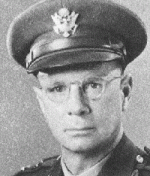 Major-General Walter Robertson, commander of the 2nd Infantry Division. Source: U.S. Army Center for Military History.
Major-General Walter Robertson, commander of the 2nd Infantry Division. Source: U.S. Army Center for Military History.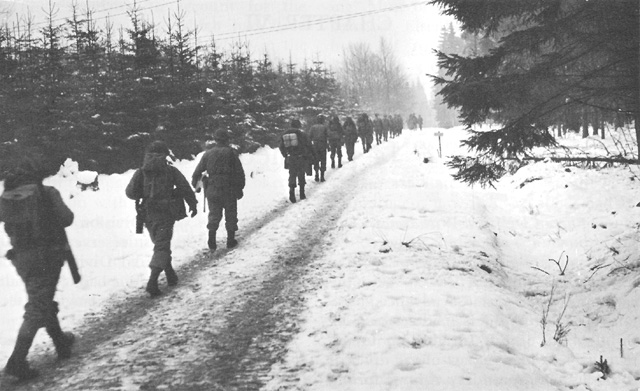 Soldiers of the 2nd Infantry Division on their way to their positions. Source: U.S. Army Center for Military History.
Soldiers of the 2nd Infantry Division on their way to their positions. Source: U.S. Army Center for Military History.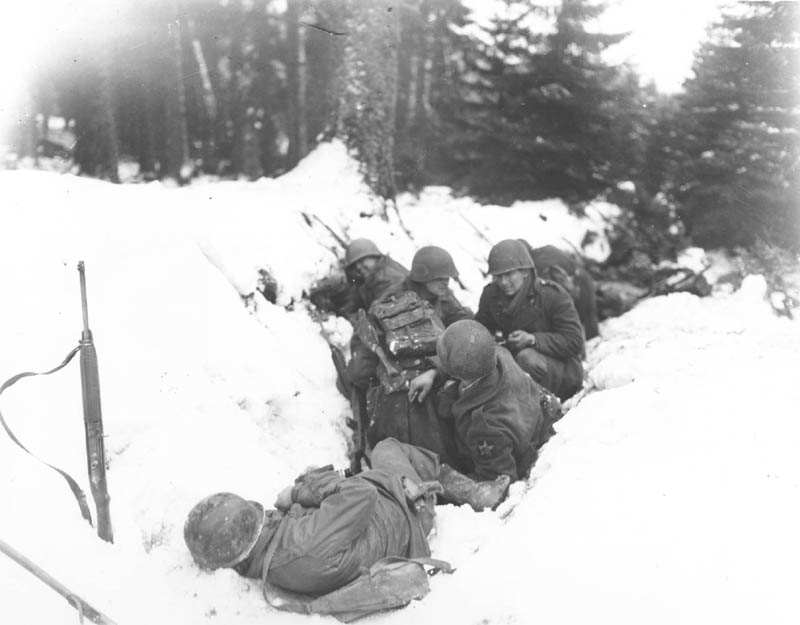 Soldiers of the 2nd Infantry Division take cover near Krinkelt-Rocherath. Source: U.S. Army Center for Military History.
Soldiers of the 2nd Infantry Division take cover near Krinkelt-Rocherath. Source: U.S. Army Center for Military History.The battle for the twin village, 18 December 1944
Units from the 2nd Infantry Division had reached the twin village during the evening.The "skinning of the cat" turned out to be not without danger ,which proved in Lausdell and again in Rocherath. When a group of tanks with infantry approached Rocherath, none of the Americans took the trouble of checking whether they were Germans. The group consisted of 4 Jagdpanzers with grenadiers under command of SS-Obersturmführer Helmut Zeiner. This commander of the 1. Kompanie SS-Panzerjäger-Abteilung 12 described his experiences in Rocherath:
"I drove calmly with my comrades through a nightly snowstorm so that the infantry could keep up with me . At a fork in the road we turned right and after a kilometer we reached Rocherath. Not a sign of life. I turned off the engine and listened. Nothing. I sent some infantry forward to take a look if there were still enemies in the village or if they had already left. The village turned out to be still occupied and I only had three Jagdpanzers behind me. It was now a matter of quickly attacking the unsuspecting enemies, which the patrol had reported, and take the village. The map gave the impression that the village was very small with a church, a graveyard and a house or two. I advanced in the direction of the church while the infantry checked the houses. But then there followed a dramatic reversal. Behind me, shots were fired. Suddenly, to my right side behind the church, I heard an engine running. I turned my tank a quarter and saw, eight or ten meters further, a Sherman tank driving backwards. I gave an order for loading high explosive shells, lowered the barrel and got inside the tank. Then we destroyed the tank. More sound came from behind the church where we destroyed a second and third Sherman".
Zeiners unexpected action was the beginning of two days of fierce combat for the twin villages.More panzers with infantry reached Krinkelt that could enter the eastern roads despite the bazooka attacks. The entire night there was house to house fighting while the chaos was augmented by groups of arriving American soldiers.The streets changed sides time and again while groups of captured soldiers were liberated again.But especially the arrival of the 2nd Infantry Division ensured that the village remained in American hands.
The German 67. Armeekorps had renewed its attack on Monschau in the morning, supported by artillery and bombardments of the Luftwaffe. After that American bombers targeted German attackers around noon, these retreated and everything became calm again. Once again no ground was won.
The events of 18 December were comparable, for the 67. Armeekorps, to the events of the day before. The grenadiers attacked before sunrise and reached the first houses of Höfen after which the American artillery shelled them. Around noon they had been driven back and the entire American line was reestablished. For the 6. Panzerarmee it now became clear that the attack on Monschau with the remaining troops was infeasible: after three days of fighting Monschau had still not been reached. The next day the 272. Volksgrenadier-Division would be moved to the south and the 326. Volksgrenadier-Division would be deployed in the attack on the Elsenborn ridge.
At Lausdell the German tanks managed to overwhelm the American lines at 08:00 hour and to fire directly at the foxholes. Sergeant Hunt saw from the village how soldiers were mowed down by machine guns after they had left their foxhole. A man lay wounded next to a tank that he tried to stop by putting his rifle between a track. Man to man fighting erupted while the American artillery tried to destroy the German tanks. Lieutenant Truppner understood that his position was lost and contacted the artillery to shell his own line. He and his men would hide in their foxholes. An artillery barrage followed, lasting 30 minutes, after which the German advance came to a standstill for a while. Nothing was heard of Lieutenant Truppner after this.
Definitielijst
- Abteilung
- Usually part of a Regiment and consisting of several companies. The smallest unit that could operate independently and maintain itself. In theory an Abteilung comprised 500-1,000 men.
- artillery
- Collective term for weaponry that fires projectiles. The modern term artillery mainly designates guns in general from which the range and calibres are outside certain boundaries. Artillery is also the name of the army unit which mainly operates such guns.
- bazooka
- American antitank rocket launcher weapon. Rocket with shaped charge is put in a long tube which is electrically fired from the shoulder of an infantry man. The bazooka can be reloaded. The bazooka produces a large flame to the rear which makes it unsuitable for fighting from closed compartments or from homes. British counterpart is the PIAT, Projector Infantry, Anti- Tank, also a man-portable anti-tank weapon. Germany used Panzerfaust and Panzerschreck, “armour fist “ and “armour terror”.
- Infantry
- Foot soldiers of a given army.
- Luftwaffe
- German air force.
Images
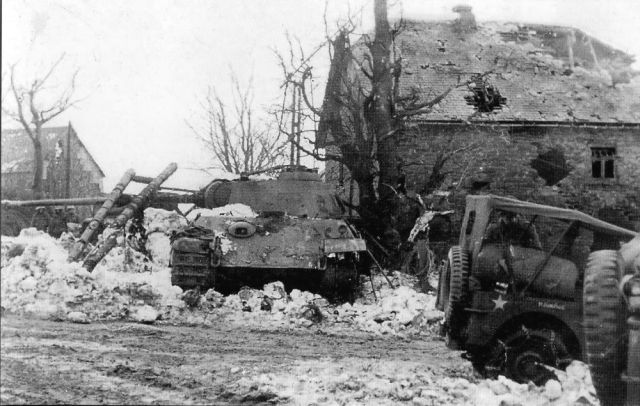 A destroyed German tank(Panther) in Krinkelt. Source: U.S. Army Center for Military History.
A destroyed German tank(Panther) in Krinkelt. Source: U.S. Army Center for Military History.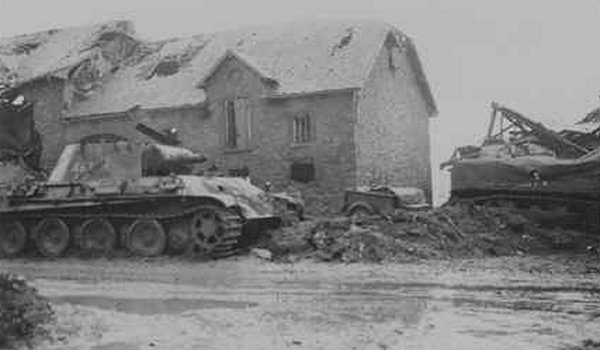 Destroyed tanks in Krinkelt-Rocherath. Source: U.S. Army Center for Military History.
Destroyed tanks in Krinkelt-Rocherath. Source: U.S. Army Center for Military History.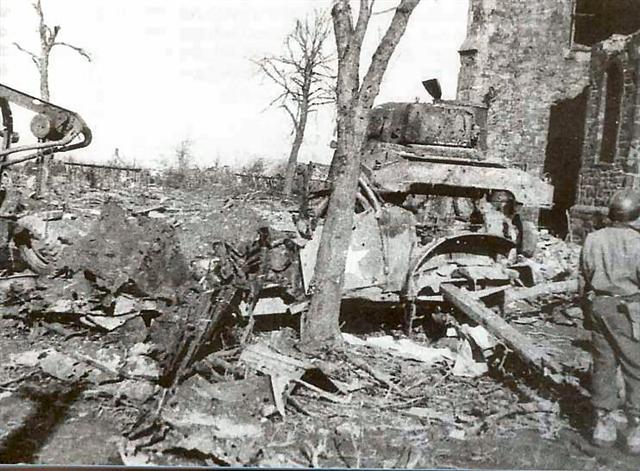 The clearly visible destruction in Krinkelt-Rocherath. Source: U.S. Army Center for Military History.
The clearly visible destruction in Krinkelt-Rocherath. Source: U.S. Army Center for Military History.Regrouping and consolidation
Around 10:00 hour McKinley received the order to retreat to Krinkelt: the last units of the 2nd Infantry Division had passed Lausdell. An hour later, as support, a new artillery barrage followed, lasting 30 minutes, followed by a counterattack from a recently arrived tank battalion. The1st Battalion, 9th Infantry Regiment started to pull back. When Sergeant Hunt walked past the command post he saw McKinley standing on the side of the road. The Lieutenant-Colonel shook the hands of the passing soldiers and thanked them for their courageous performance. After arriving in Krinkelt, the number of men was counted: of the 600 men that went to Lausdell only 144 were left.
The 12. SS-Panzerdivision started the attack on the villages in the morning with new reinforcements.After that McKinleys men had retreated, the Germans also attacked from Lausdell, with Panthers and infantry. Unnoticed because of the morning fog, they drove into the streets of Krinkelt-Rocherath. The fog was also an advantage to the defenders: the Americans, in small bazookateams, could work their way forward and knock out the Panthers. Willi Fischer, commander of a Panther, described the situation:
"It was a deadly trap for the Panzers. When I reached the point in front of the church I received a taste of what was to come when Beutelhauser, my commander who drove in front of me, received a direct hit. We both had passed the second crossroads and I saw the antitank weapon when it fired at Beutelhauser. I manoeuvred my Panzer concealed behind a house without knowing what would be next. Nearby the Panzer from SS-Haubtsturmführer Brodel burnt out calmly with the body of Brodel still lifeless in the turret. In front of me, further on the road, more Panzers had been knocked out.I realized that I had to leave my hopeless position and had to withdraw behind the crossroads. It was also clear to me that the American antitank gun expected this manoeuvre and was ready to fire at the crossroads. And this was exactly what happened. The first shot missed. The second shot hit a track and the side of the hull. Luckily no one was killed, but het radio was broken and the track was out of use. The entire attack had come to a standstill and near our new position we saw approximately 20 Americans appearing from houses that we had already conquered!"
During the entire afternoon the American as well as German artillery shelled the villages while Panthers, Shermans and American tank destroyers fired at each other in the streets.The infantry units kept fighting for every house in this disorder of explosions. The difficult mission of Major-General Robertson and the 2nd Infantry Division had almost come to an end.
Towards the evening Kampfgruppe Peiper, the vanguard of the 1.SS-Panzerdivision, had progressed already 40 kilometres further westwards. SS-Oberstgruppenfuhrer Josef Dietrich ordered SS-Gruppenführer Hermann Priess subsequently to cease the fighting for Krinkelt-Rocherath and to join the 12. SS-Panzerdivision with the 2. SS-Panzerkorps. The road to Malmedy now had to be conquered from the south instead of the east. The 277. Volksgrenadier-Division and the 3. Panzergrenadier-Division would continue the attack on the twin villages.
During the night of 18 on 19 December, the last groups of infantrymen withdrew from the frontlines through Krinkelt-Rocherath and the Americans here received the order to leave their position and go towards Elsenborn too.
On 20 December around 02:00 hour the last American units extracted from Wirtzfeld to the higher situated Elsenborn that now was defended by the 99th and 2nd Divisions while their northern flank was protected by the 9th Infantry Division.
The German High Command realized that opening the most northern Rollbahn to the west had by now become impossible and sent units to the 5. Panzerarmee in the centre of the Ardennes offensive where the main attack now was concentrated. The German infantry attacks that would follow after 19 December lacked the heavy support to really threaten the Elsenbornridge.
The inexperienced 99th Division had , in cooperation with the 2nd Division, in difficult weather circumstances and an unclear struggle, stopped a well-equipped and numerically superior enemy during the battle for the Elsenbornridge. The northern front of the Ardennes offensive was the only front where the Germans had not been able to force a breakthrough. Only Kampfgruppe Peiper had punched a small hole in their lines until, they too, were destroyed near La Gleize. The performance of the 99th Infantry Division is comparable to its sacrifice: in four days time 14 officers and 119 soldiers had been killed in battle. Around 53 officiers and 1,341 soldiers were listed as missing in action and another 51 officers and 864 men had been wounded. More than 90 per cent of these losses of the division were listed during 16, 17, 18 and 19 December 1944.
De 2nd Infantry Division had also suffered heavy losses. Because the attacks at Wahlerscheid and the defence of Krinkelt-Rocherath took place in only seven days time, it is difficult to determine how many killed and wounded were tied to the twin villages. Cautious figures report around 1,264 killed and missing and 475 wounded. Precise records lack for the period from 13 to 19 December 1944.
The defence of Bastogne by the men of the 101st Airborne Division has become the symbol of American vigour during the Ardennes offensive.In order to raise morale the American Ministry of War reported their fight already during the siege of Bastogne. The vigour and the performance of the 99th and 2nd Infantry Divisions during the battle for the Elsenbornridge are also very much worth mentioning.
Definitielijst
- Ardennes offensive
- Battle of the Bulge, “Von Rundstedt offensive“ or “die Wacht am Rhein“. Final large German offensive in the west from December 1944 through January 1945.
- Infantry
- Foot soldiers of a given army.
- Kampfgruppe
- Temporary military formation in the German army, composed of various units such as armoured division, infantry, artillery, anti-tank units and sometimes engineers, with a special assignment on the battlefield. These Kampfgruppen were usually named after the commander.
- offensive
- Attack on a smaller or larger scale.
- Regiment
- Part of a division. A division divided into a number of regiments. In the army traditionally the name of the major organised unit of one type of weapon.
Images
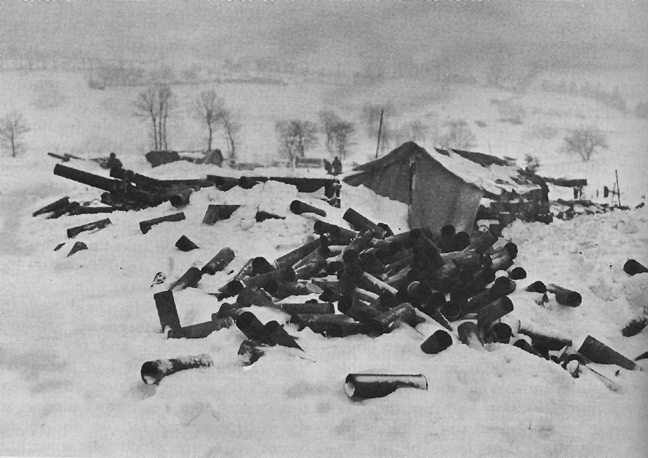 American position on top of the Elsenbornridge. Source: U.S. Army Center for Military History.
American position on top of the Elsenbornridge. Source: U.S. Army Center for Military History.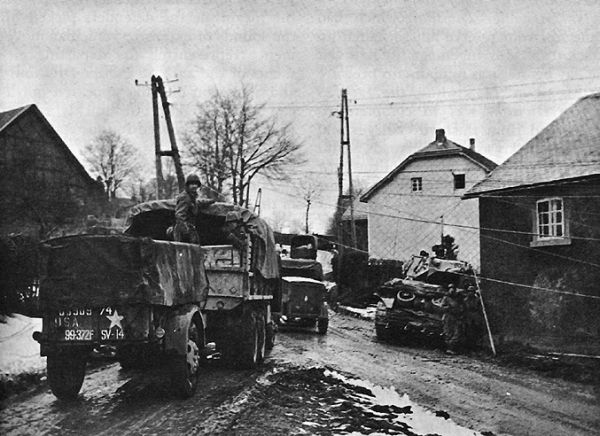 Retreat from Wirtzfeld. Source: U.S. Army Center for Military History.
Retreat from Wirtzfeld. Source: U.S. Army Center for Military History.Information
- Translated by:
- Peter ter Haar
- Published on:
- 08-07-2015
- Last edit on:
- 30-09-2024
- Feedback?
- Send it!
Related sights
Related books
Sources
- CAVANAGH, W. C. C., The Battle East of Elsenborn and the Twin Villages, Pen & Sword Books Limited, Barnsley, England, 2004.
- COLE, H.M., The Ardennes: Battle of the Bulge, William's Konecky Assoc, Washington, 1965.
- CROSS, R., Het Ardennenoffensief 1944, Centrale Uitgeverij Deltas, 2003.
- ENGELS, E., Battle of the Bulge 44-45, Lannoo, Tielt, 2004.
- PALLUD, J.P., The Battle of the Bulge, Battle of Britain International Ltd., Essex, 1984.
